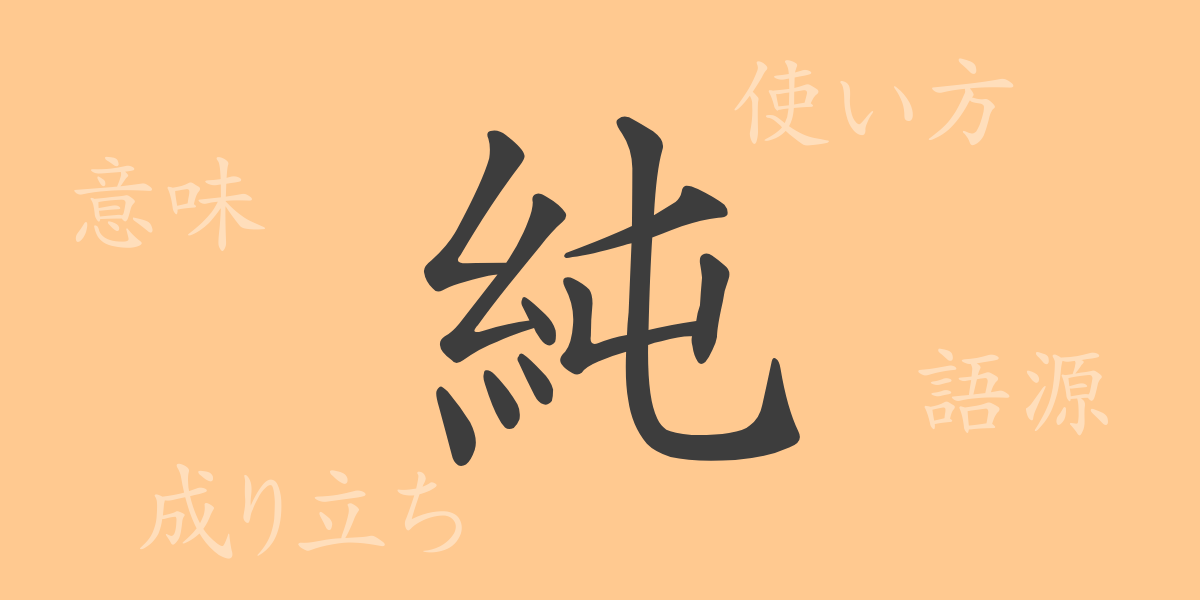Japanese contains a rich vocabulary suited to expressing emotions, beauty, and delicacy. Among these, the kanji “純(じゅん, jun)” is frequently used to convey expressions that touch people’s hearts. This article delves into the charm of the kanji “純(じゅん, jun),” exploring its origin, meaning, usage, and common idiomatic expressions.
純の成り立ち(語源)
The kanji “純(じゅん, jun)” originated in ancient China. It originally derived from “駿(しゅん, shun),” which describes a fast horse. By removing the “馬(うま, uma)” component (horse) from “駿(しゅん, shun),” the character “純(じゅん, jun)” emerged. This evolution represents a shift from the excellence and speed symbolized by a horse to the concept of purity and unmixed state embodied by “純(じゅん, jun).”
純の意味と用法
The kanji “純(じゅん, jun)” means “unmixed,” “pure,” or “clean.” It is used to describe the essence of things or the purity of emotions, as seen in terms like “純正(じゅんせい, junsei)” (genuine) and “純情(じゅんじょう, junjou)” (pure-hearted). This kanji is widely used to emphasize quality or sentiment.
純の読み方・画数・部首
The kanji “純(じゅん, jun)” is included in the list of commonly used kanji and is frequently seen in daily life.
- 読み方: 音読みでは「ジュン(jun)」、訓読みは特にありません。
- 画数: 全部で10画です。
- 部首: 糸部(いとへん, itohen)です。
純を使った熟語・慣用句・ことわざとその意味
Idioms and expressions containing “純(じゅん, jun)” reflect the meanings of purity and cleanliness. For example, “純愛(じゅんあい, junai)” refers to true, unconditional love, and “純情(じゅんじょう, junjou)” signifies a pure, innocent heart. “純金(じゅんきん, junkin)” means pure gold, highlighting high value and preciousness. These words underscore the significance of “純(じゅん, jun)” in the Japanese language.
純についてのまとめ
The kanji “純(じゅん, jun)” plays a significant role in Japanese, from its form and meaning to its everyday usage. Symbolizing purity and clarity, this character has the power to resonate with people through words. As one of the beautiful elements of the Japanese language, “純(じゅん, jun)” will continue to be cherished.

























